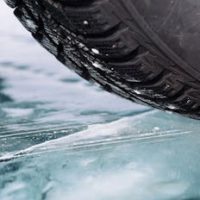Liability for Falls and Accidents Caused by Black Ice

Let’s say that you are walking on a roadway, and you slip and fall. Or, imagine that you are driving on that roadway, and your car tires lose traction, causing the vehicle to veer out of control. You insist that the ground must have been icy, but the property owner disagrees with you—for winter time, it actually has been unseasonably warm, and the sun has been out.
What happened? How could you have slipped on ice, when it is relatively warm out? The answer lies in a hidden danger that not many people are aware of: the phenomenon of black ice.
How Does Black Ice happen?
Black ice happens when there is the perfect mix of temperatures.
At night, temperatures dip, perhaps even causing it to snow. During the day, it gets unseasonably warm. The daytime warmth melts the accumulated snow from the night before. When the next nightfall comes, along with the dip in temperatures, that melted ice, ices over again on the roadway. In fact, the water may even be in shaded areas that never fully melt with the sun, even when it does come out and heat up the day.
The result is a thin, clear sheet of ice, called black ice, named for the visibility of the black roadway underneath the ice. The icy roadway, from a driver’s or pedestrian’s perspective, looks just like a clear roadway, because you can see the road itself, and the thin layer of ice is not visible.
Who is Liable?
Of course, you can’t sue Mother Nature for black ice. But you can sue private property owners who fail to take measures to avoid black ice. There are things that property owners can do, to avoid the accumulation of black ice, or at least, to warn drivers or pedestrians of the presence of black ice.
Drivers who lose control of their vehicles and cause accidents because of black ice, may at first seem like victims of black ice themselves. But when temperatures dip at night, and especially during wintertime, drivers need to adapt their driving habits to account for the dangerous road conditions.
A driver who, for example, didn’t leave enough room to stop and rear-ended another car because of black ice, is still liable for the accident.
Many drivers also don’t “winterize” their vehicles, in order to make them more adept at driving in black ice conditions.
Slip and Falls
When it comes to falls on property, property owners can treat surfaces, to give those surfaces a tackiness to hold grip when people walk on the ground. Sand, salt, or other gritty substances can be applied to surfaces that are prone to accumulation of black ice.
Warnings should also be posted, especially in tourist areas, where many visitors from other, warmer parts of the country, nay have no idea what black ice is.
Call the Knoxville personal injury lawyers at Fox Farley Willis & Burnette, PLLC, today if you are injured in an accident, or by black ice.
Source:
casetext.com/case/brown-v-holiday-al-mgmt-sub-llc











